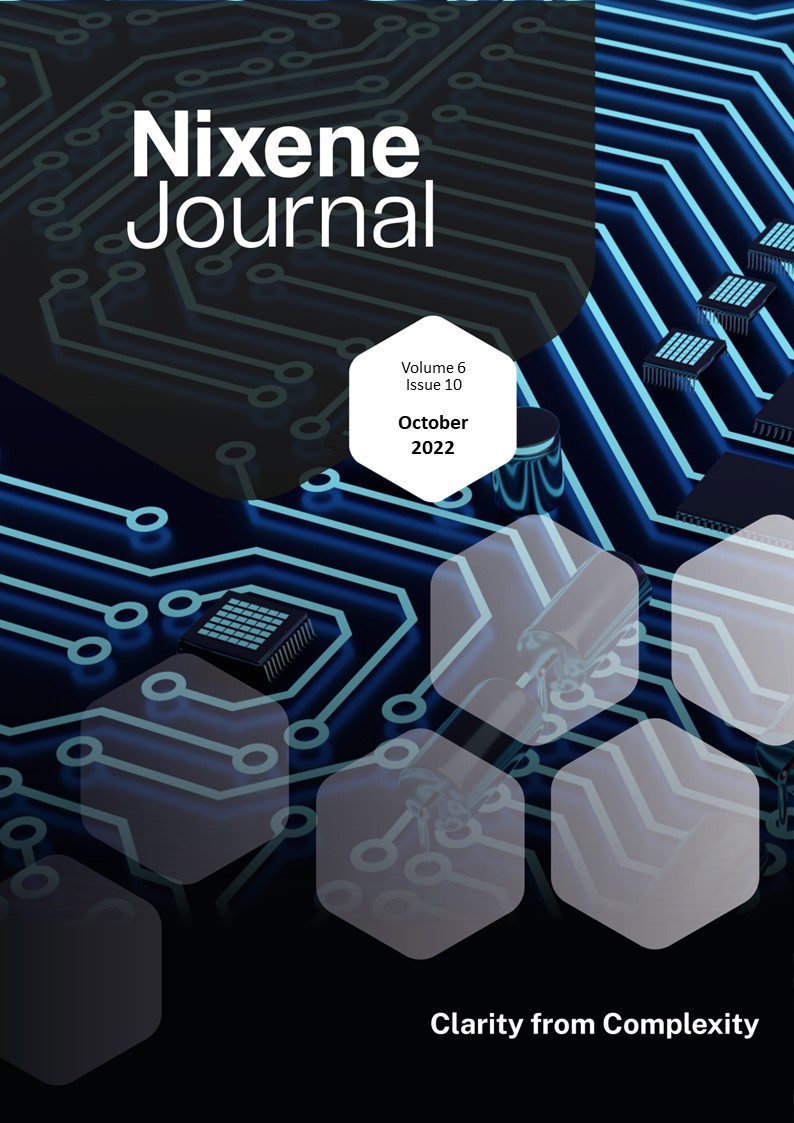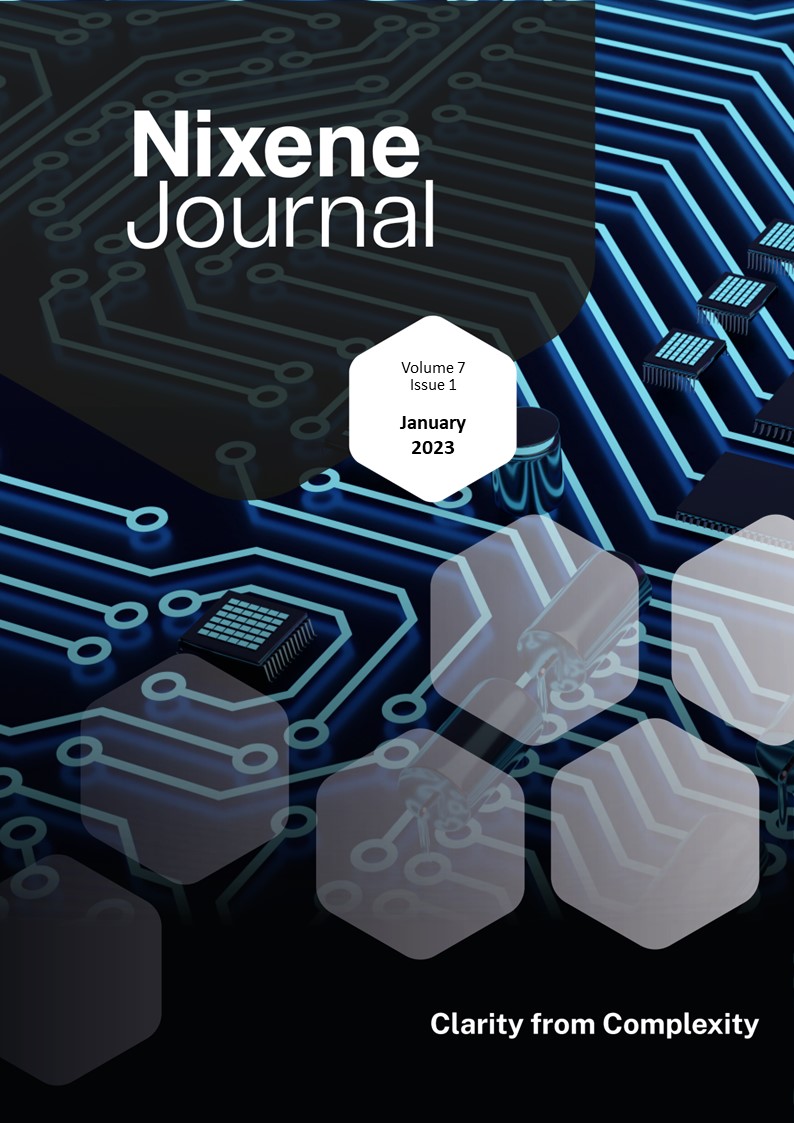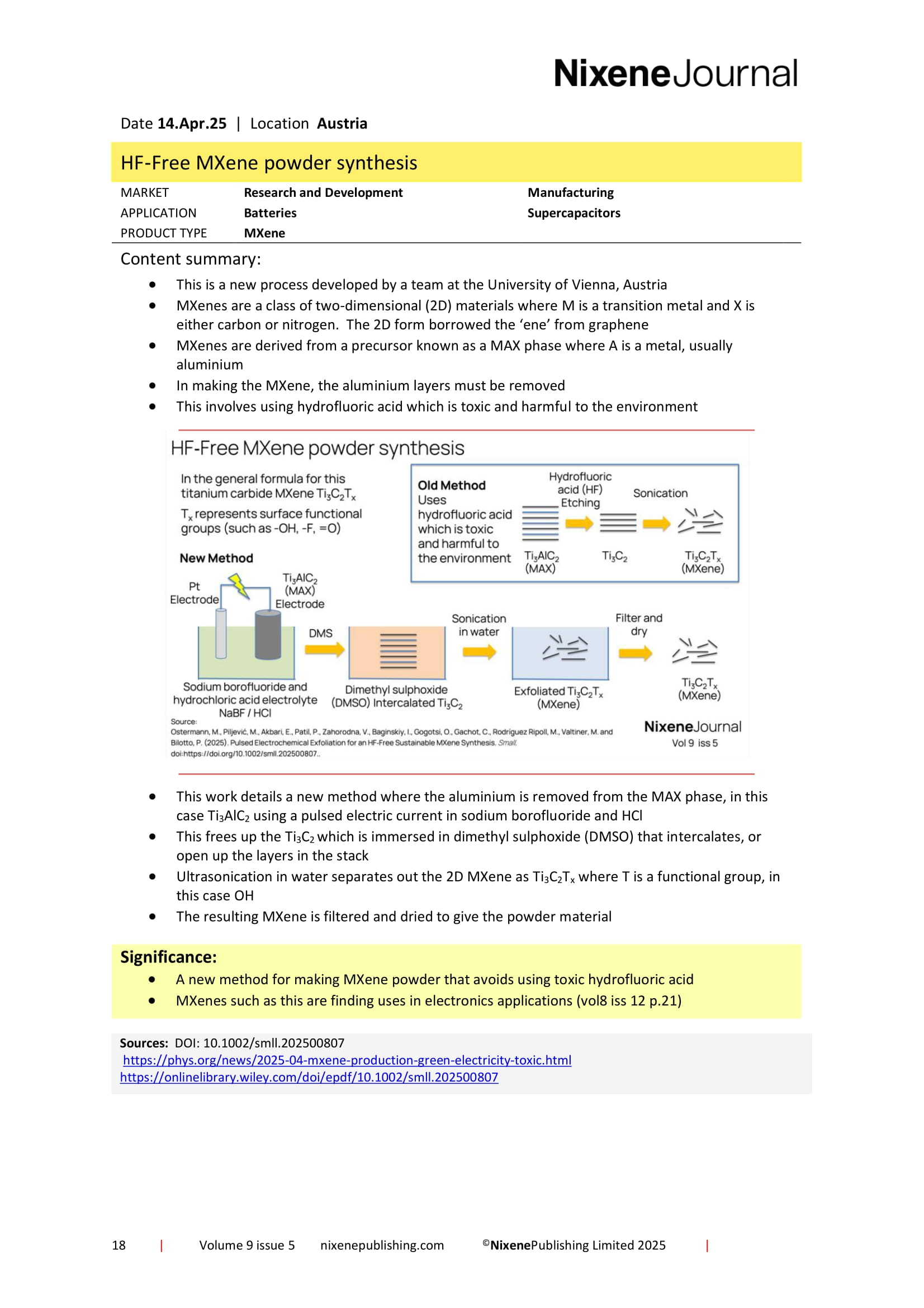Journals
This product is relevant to the following:
Material:
Other:
, ,Locations:
Markets:
Applications:
Product Types:
Technologies:
Related products
-

Vol 6 Issue 10
Dear reader, you will know that we are tracking the progress of the biggest graphene companies in the world. Levidian is the biggest on paper with their announced £700 million ($780 m USD) contract with the UAE (vol 6 iss 6 p.26). The other company is Skeleton Technologies who make graphene enhanced supercapacitors for transport systems. They have been making steady progress over the past few years and have now announced a new €220 million ($215 m USD) super factory that will open in Germany in 2024. This will give the company an order of magnitude increase in production capacity (p.32 of this issue). Skeleton have also announced they have been awarded the contract to supply supercapacitors for the latest metro units in the Spanish city of Grenada (p.22). Further industrial progress is being made in the USA. Cardea Bio is a manufacturer of graphene field effect transistor biosensors. Essentially these are lab-on-a-chip devices that will give an instant read out of medical conditions from a sample of body fluids. The company has mastered the art of mass production and its factories can produce up to 20,000 graphene sensors per month. They also report that next year they will have produced their millionth biosensor. This company is shaping up to be a formidable presence in the graphene biosensor market. On the research and technical side, there has been much progress in the quality control of graphene. Terrance Barkan convened a webinar of metrology experts from world class institutions in the UK, USA and South America. The Raman spectroscopy masterclass is well worth viewing if you need to understand how the quality of graphene is measured by this technique and its limitations (p.15). By coincidence this month researchers in India have developed a new technique for reliably measuring the number of layers of graphene in a sample. Rather than use an expensive raman spectrometer, they have found a much cheaper optical microscope can provide similar information (p.17). In the UK, researchers have published a literature review of sustainable fibres for polymer composites. The work clearly shows why sustainable natural fibres are not being adopted to replace synthetic fibres. Natural fibres are an order of magnitude weaker than their synthetic counterparts. There is room for optimism though. The study shows that graphene can enhance the strength of natural fibres in polymer composites and shows there is one primary candidate natural fibre that, with graphene, just might challenge the supremacy of synthetic fibres (p.18). You can find out about this and much more in this fascinating issue. Dear reader, I invite you to read on… Adrian Nixon 1st October 2022£45.00 View product -

Vol 5 Issue 1
In a previous life I led the market intelligence gathering and analysis for a large international company. I discovered that a good way to find out what the competition and customer organisations would do in the future was to look at the influence the corporate leader had on his or her company. Two new top appointments have been announced this month. First Graphene has a new Chief Executive Officer (CEO) with sales, marketing and growth expertise. Zen has a new CEO and also a Chairman, with skills acquired in financial management and investor relations. It will be interesting to observe the corporate behaviour of these two companies over the coming years. If the skills set of the leadership is a guide then we can expect that by this time next year First Graphene will generate its income from increased sales in diverse markets through organic growth and Zen will have raised more money from a variety of institutional sources focussed on their anti-viral graphene. We’ll watch both companies with interest. Graphene is still throwing up surprises in fundamental science: Andre Geim’s team at the University of Manchester continues to create high quality research. The latest paper in nature explores the way water condenses to a liquid from a vapour inside nanocapillaries made in two dimensional materials. The team showed that as the humidity rises to 80% water suddenly condenses out as a liquid and fills the nanocapillaries. This work may also mean that other graphene surfaces could be affected in a similar way by high levels of humidity suddenly transitioning to a liquid coating. Designers of graphene sensors for the internet of things may want to bear this in mind. A team at Princeton University in the USA has been exploring the source of superconductivity in twisted bilayer graphene. They found topological quantum states were created by the magic angle twist which forces the electrons to be at the same energy (a flat band). This creates regions that have electrically insulating interiors but the edges allow electrons to flow freely even if there are imperfections present in the material. At low temperatures and mild magnetic fields, the edges form stable superconducting channels throughout the material. These topological quantum states were a surprise discovery and will keep researchers busy for some time to come. And another team in China has created a new method for making graphene from waste plastic using microwave sintering. This shows that graphene will spontaneously form when carbon atoms are ripped apart and allowed to reform in the absence of oxygen. It looks like we will not run out of graphene supplies any time soon. Further fascination can be found in Rob Whieldon’s special feature. Rob has analysed the market keywords we use to tag all the applications of graphene since we started in 2017. His feature is a must-read in this issue. Adrian Nixon, 4th January 2021£45.00 View product -

Vol 7 Issue 1
Batteries feature several times in this issue of the journal. Dear Reader, you will know that energy density is the key performance metric we watch. The higher the energy density (Wh/kg) the further you can travel on a battery charge. Current lithium-ion (Li-ion) batteries have an energy density around 260Wh/kg. We have highlighted the work of a company developing lithium-sulphur technology (Li-S) vol 5 iss 12 p.35. They have claimed energy densities over three times that of current Li-ion batteries using graphene enhanced cell designs. You will probably guess that we have been following this company and contacted them multiple times. We have yet to see data to back up these extraordinary claims. It was with interest that we found an online discussion between battery experts, the consensus view is that Li-S technology can create higher energy densities than Li-ion. However, this comes at a cost of reduced battery life. Perhaps this is the reason we have yet to see data backing up the claims for Li-S technology. Then NASA announced they have been working on a new graphene enhanced battery technology. The graphene is used as the structure for a sulphur/selenium cathode and is based on holey graphene that NASA developed in 2017. A solid-state electrolyte separates the anode from a lithium metal anode. The interim results are promising. They have achieved an energy density of 500Wh/kg. The battery seems to be safer too. It resists impact damage and has a maximum operating temperature of 150°C. NASA anticipates this solid-state battery will start to become available within three to five years. Elsewhere in this issue we report on developments as diverse as graphene enhanced condoms in India to graphene enhanced polymers launched on a SpaceX rocket bound for the moon. There is so much more in between these two very different applications, I encourage you to read on… Adrian Nixon 1st January 2023£45.00 View product -

Vol 5 Issue 9
At the time of writing the Paralympic games are still in progress in Tokyo. The able-bodied Olympic games in Tokyo has ended and details of the technology behind some of the medal winning performances has leaked out. Graphene has been playing a role in these games. The gold medal for archery was won by Korea with their athlete using graphene from Standard Graphene to enhance the polymer composite bow. The Women’s cycling produced two gold medals for the Netherlands with the winner using Directa Plus graphene ink in the clothing to maintain optimum heating. Haydale worked with the British team to create a similar wearable technology with its graphene inks for British medal winners. The technology is secret at the moment but we can expect a trickle-down effect to spread graphene further out into the sports market. We have three special features this month. Our Women in Graphene series continues. Debbie an interviewed Akanksha Urade, from India. We noticed Akanksha’s work on our social media feeds, she has a gift for explaining complex subjects in a clear and concise way that shows she really understands the science. This matches our ABC approach (p.6) and we respect her talents, well worth a read. Debbie also interviewed Dr. Chris Griggs of the US Army ERDC. They have been excited about the potential for graphene for some time now and are actively exploring several avenues of development. They are working with Universal Matter who are developing the flash graphene process from Prof James Tour’s lab at Rice University. They also have a strong interest in the removal of toxins from wastewater and they have an increasing interest in graphene and infrastructure applications, particularly with concrete and asphalt. I interviewed the leadership team behind the world’s first application of unreinforced graphene enhanced concrete. The GEIC and Nationwide Engineering have made a quantum leap in the application of this technology that they call Concretene. Concrete can not only be made stronger, so less is used, but graphene also helps the concrete achieve its final strength much faster than anyone expected. We suspect there are more benefits waiting to be discovered from these trials. There is so much more happening in the world of graphene and 2D materials this month. I have run out of space to summarise here so I’ll encourage you to dive into this packed issue and explore further. Adrian Nixon, 1st September 2021£45.00 View product



